A CART FOR ALL SEASONS . . . AND GARDENS
What is It?
Praise is in order for an unsung hero of my garden — my garden cart. I’m serious. This cart has played a fundamental role in the pleasures my garden has offered to numerous eyes, noses, and mouths.
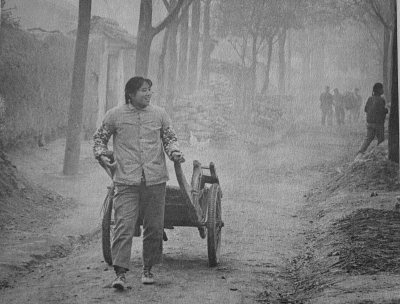
Cart use in China, 1980’s
Let’s first be clear on just what implement I’m talking about. A garden cart is quite different from a wheelbarrow. Rather than having a single, squat tire, a garden cart has a large body boxed in by wood and flanked by two bicycle-ish tires. Bicycle-ish but not bicycle: These heavy duty, tires have brawny spokes. Also a bead so heavy-duty that I couldn’t change a flat tire myself. More on that later. (A yawn may be welling up within readers already familiar with or in possession of a garden cart; sorry, but gardeners unfamiliar with this implement need to become so.)
The size of the tires and their being just about centered fore and aft along the wooden bed are what make a garden cart useful in a very different way from a wheelbarrow. To whit: This cart lets you move a lot heavier load — up to four-hundred pounds! The reason is because the large wheels move smoothly over bumps and because the wheels carry most of the weight. Mostly, you just pull the weight, in contrast to a wheelbarrow, which requires you to lift and push. My cart has been indispensable in moving rocks as I built, over the years, about a hundred feet of stone walls.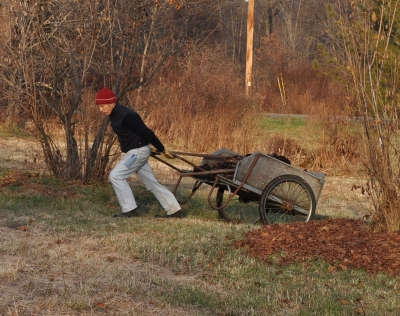
Just don’t pull this cart downhill when its heavily loaded. Staying uphill from the cart in this case keeps you from running yourself over.
Many Uses, Many Years . . . an Upgrade, Finally
The large, high-walled bed of the cart also makes it possible to haul around oodles of bulky materials. My friend Bill praises his cart for being able to move, in one trip, four bales of hay from their storage area to his horses.
My garden thanks this cart for the enormous quantities of organic materials hauled over to it over the years. Some of these organic materials, such as compost, are heavy, and others, such as leaves, are bulky. Quantities of organic materials are what make great soils, and great soils are the foundation of great gardens, at least those in which grow vegetables or traditional flowers.
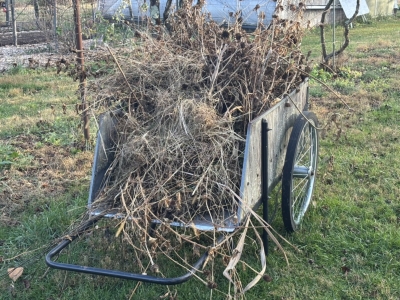
Cart loaded with garden cleanup headed to compost pile
Year after year, for over four decades, my cart has hauled the mowings from a one acre hayfield to be turned into compost or laid around trees and berries as mulch. 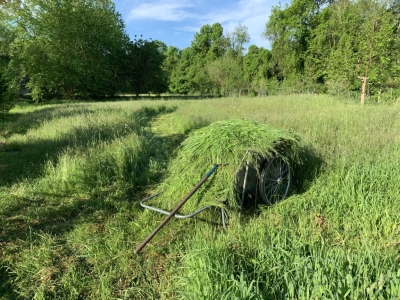 Year after year, large piles of wood chips have been moved, one cart load at a time, from my driveway, where arborists conveniently dump truckloads of chips, back to my garden for mulch or for paths.
Year after year, large piles of wood chips have been moved, one cart load at a time, from my driveway, where arborists conveniently dump truckloads of chips, back to my garden for mulch or for paths. 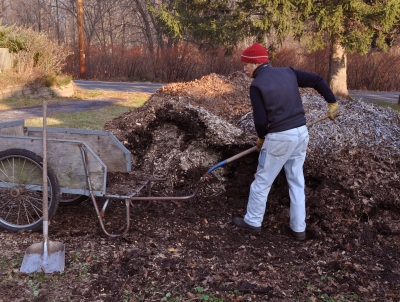 Autumn leaves, bagged and discarded by neighbors, likewise have bumped along within the wooden bed to their eventual home beneath trees or blueberry bushes, or to the compost pile. The cart has occasionally moved plants and soil. Regularly, usually this time of year, the cart rolls finished compost from compost bins over to beds to be put down as an inch thick icing.
Autumn leaves, bagged and discarded by neighbors, likewise have bumped along within the wooden bed to their eventual home beneath trees or blueberry bushes, or to the compost pile. The cart has occasionally moved plants and soil. Regularly, usually this time of year, the cart rolls finished compost from compost bins over to beds to be put down as an inch thick icing.
A few years ago I developed renewed appreciation for my garden cart only because the wooden bed had finally reached such a state of disrepair that every shovel full of compost was also taking along plies of soon-disappearing plywood. After two days of measuring and dismantling, I replaced the old plywood with new.
Not that I begrudged the cart for its state of disrepair. After all, it had hauled and had scraped from its wooden bed literally tons and tons of materials. It had stood the further abuse of spending most of its life outdoors, exposed to rain, snow, heat, and cold.
In appreciation for its service, I decided to do that wooden bed one better, lining the bottom and a few inches up the sides with aluminum sheet metal.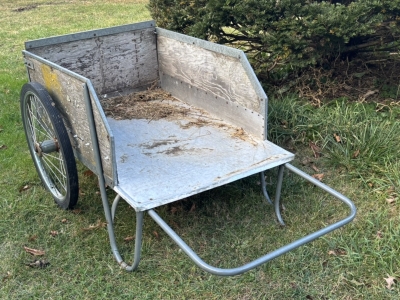
My cart or my use of the cart had a predilection for getting flat tires, which, as I mentioned above, I couldn’t repair myself. The cart now rides forever flat-free on solid rubber tires; they’re not cheap but worth it if you factor in the cost and time regularly needed for such repairs.
Build or Buy
If I didn’t already own three garden carts, I would build one. An excellent though hard to find book on building a garden cart is David Tressemer’s The Handcart Handbook, written in 1985.  He detailed the building of a cart with many improvements over even the best ones you can buy. Improvements such as a heavy-duty frame in which the wood can be easily replaced, two curved bars on either side of the front of the frame for ease in dumping, and two straight front to back handles rather than the usual U-shaped handle, to allow a user to stand close to the cart bed when shoveling out a load. I added a brake on one of my carts to prevents its escape on hills.
He detailed the building of a cart with many improvements over even the best ones you can buy. Improvements such as a heavy-duty frame in which the wood can be easily replaced, two curved bars on either side of the front of the frame for ease in dumping, and two straight front to back handles rather than the usual U-shaped handle, to allow a user to stand close to the cart bed when shoveling out a load. I added a brake on one of my carts to prevents its escape on hills.
I suggest that any garden would be improved by a garden cart. If you’re buying one, get a high-quality cart. Look especially for sturdy wheels and a large bed of high quality plywood. My original cart, purchased decades ago, was from Vermont Carts. Second one was at yard sale from the same manufacturer. Third one was from China; cheap but not as well-balanced or sturdily constructed. All three now have aluminum-lined beds and solid rubber tires.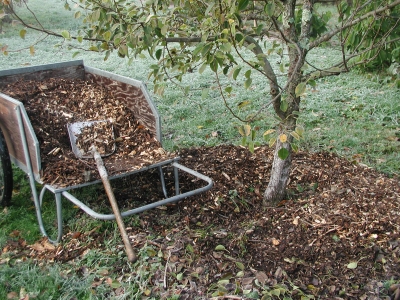

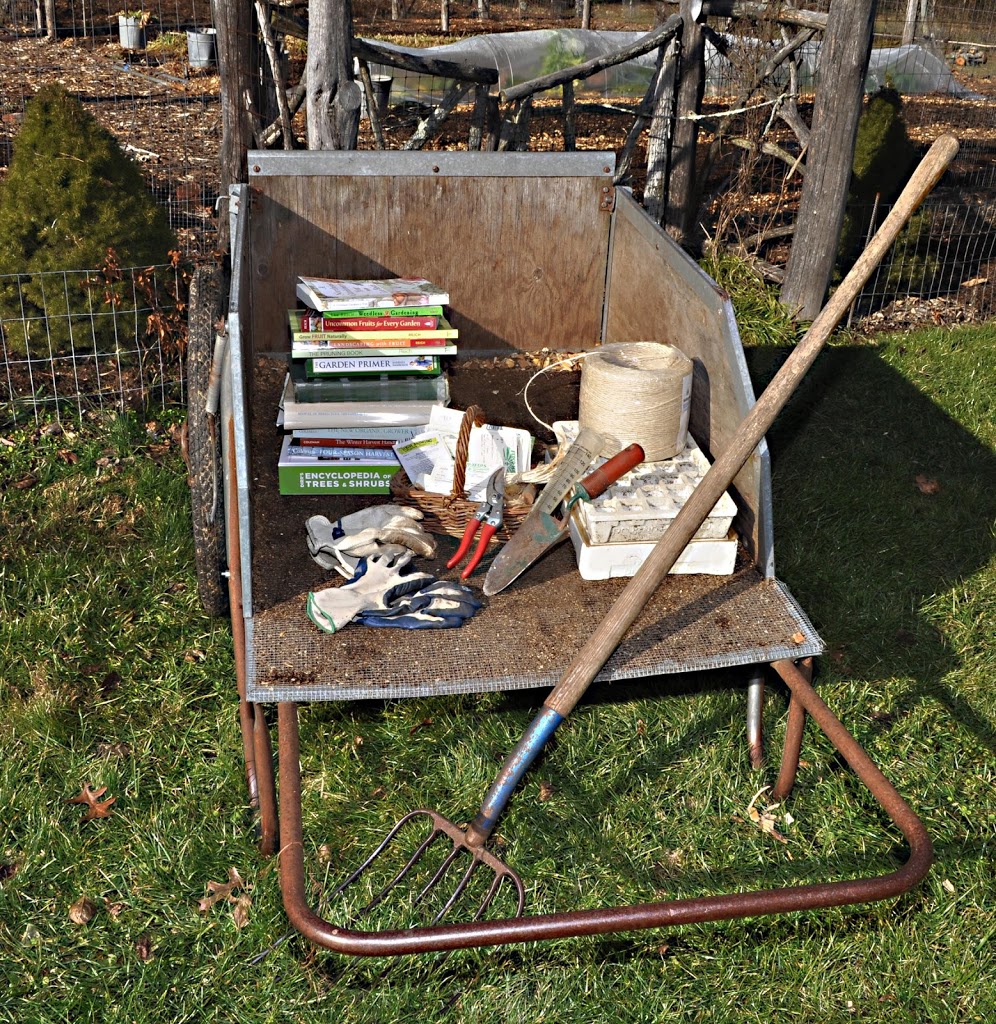
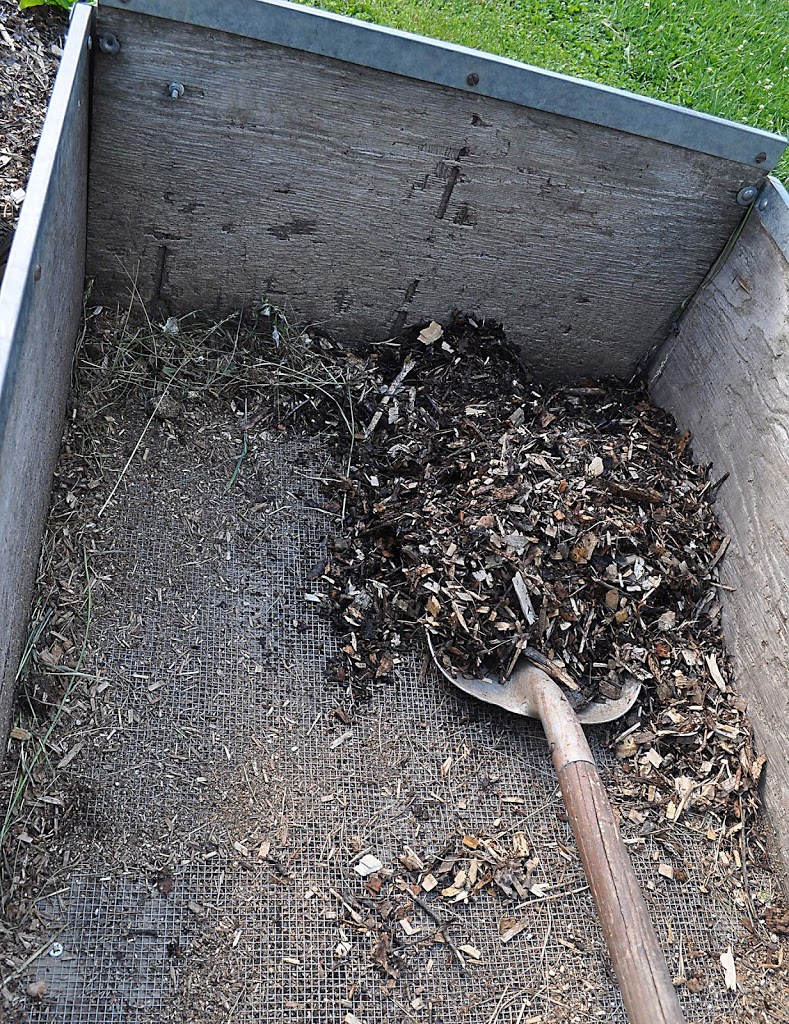


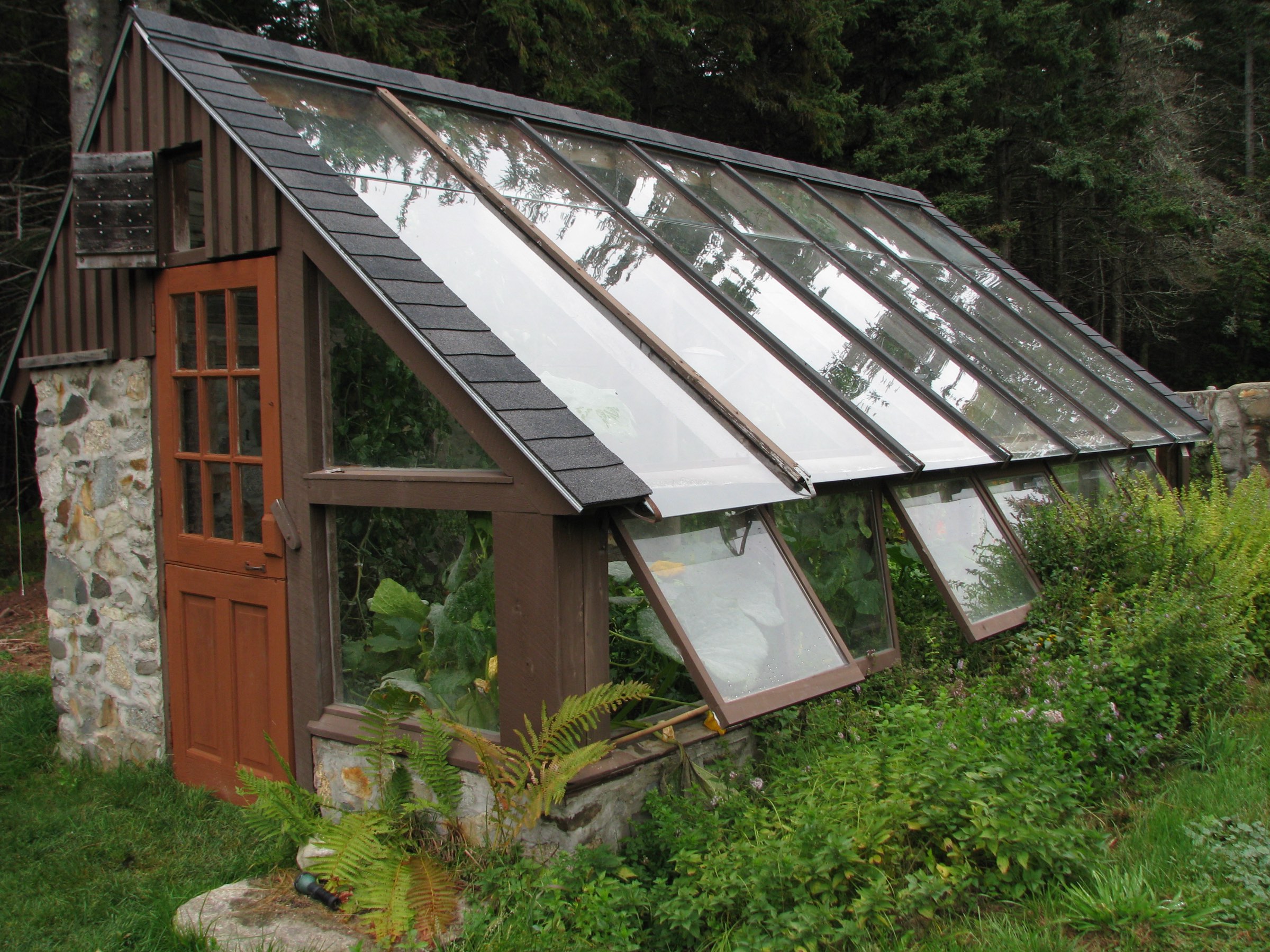
We have this cart too – going on 25 years – so great!!! Have done some minor repairs, and I’m always amazed at how it lasts!
And keeps lasting, with care and replacement of worn parts. I guess that would be the bed and sidewalls, especially if stored outdoors.